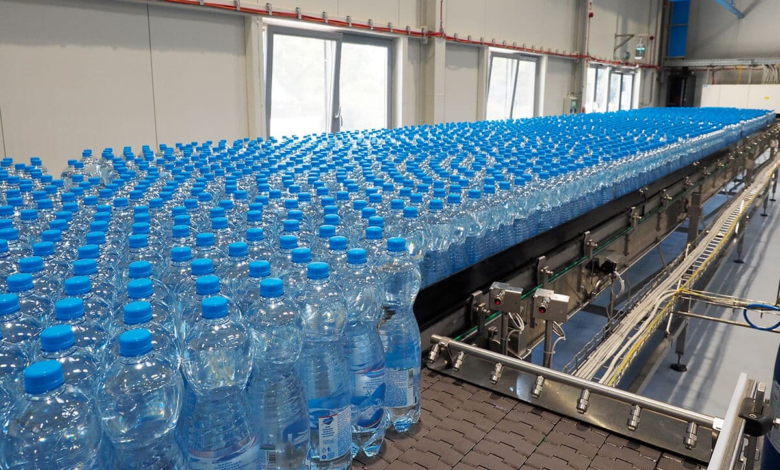What Size Accumulation Table Do I Need For A 500 Bottles Per Minute Line?

When setting up a new bottling line or upgrading an existing one, getting the accumulation table size right is crucial for maintaining efficient operations and preventing costly downtime. What size accumulation table do I need for a 500 bottles per minute line?
For a 500 bottles per minute line, you’ll need an accumulation table that can hold approximately 5-7 minutes of production, translating to 2,500-3,500 bottles of accumulation capacity.
While this general sizing rule works in many cases, several critical factors could require you to adjust this number up or down. The actual size you’ll need depends on your specific production parameters, downstream equipment reliability, and the type of product being packaged – factors that could significantly impact your final accumulation table requirements.
What Factors Affect Accumulation Table Sizing?
The first significant factor to consider is your downstream equipment reliability. If you have older packaging equipment or machines requiring frequent maintenance, you’ll want to increase your capacity to handle more extended downtimes. In these cases, you might need up to 10 minutes of accumulation, pushing your requirement to 5,000 bottles.
Product type also plays a crucial role. Light-weight plastic bottles are more prone to tipping and require more stable accumulation surfaces, which might reduce your adequate accumulation space. Glass bottles, while more stable, need additional spacing to prevent scratching and breakage, potentially requiring a larger table.
Line configuration and available floor space can impact sizing decisions as well. A U-shaped or L-shaped line might benefit from multiple smaller accumulation tables rather than one large table, which could affect your total capacity needs.
How Does Line Speed Impact Accumulation Requirements?
While our example focuses on 500 bottles per minute, it’s important to understand that accumulation needs don’t scale linearly with line speed. Faster lines generally require proportionally more accumulation time because quick stops and starts become more challenging at higher speeds.
For instance, a 1,000 bottles per minute line might need 8-10 minutes of accumulation instead of just double the 5-7 minutes recommended for 500 bottles per minute. Higher speeds increase the risk of bottle jams and require longer acceleration and deceleration times.
What Are The Consequences Of Undersized Accumulation?
An undersized accumulation table can lead to significant production inefficiencies and increased costs. When downstream equipment stops, insufficient accumulation capacity forces upstream equipment to shut down more frequently, resulting in lower overall line efficiency and reduced throughput.
This situation can also lead to increased product waste, especially in beverage operations where products might need to be disposed of if the filling system stops unexpectedly. Additionally, frequent starts and stops cause more wear and tear on equipment, potentially leading to higher maintenance costs and shorter machine life spans.
The impact on labor costs should also be considered, as operators will spend more time managing line stoppages and restarts instead of focusing on value-adding activities.
How Can I Calculate The Physical Dimensions Of My Accumulation Table?
Once you know how many bottles you must accumulate, converting that number into actual table dimensions requires careful calculation. Start by determining the diameter of your bottles and add about 10-15% for spacing between them. For example, if you have 2-inch diameter bottles, plan for about 2.3 inches per bottle in your layout.
Depending on bottle stability and guidance system design, the table width typically accommodates 8-12 bottles side by side. Using these measurements, you can calculate the length needed. For instance, if your table holds 10 bottles across and you need space for 3,000 bottles, you’ll need approximately 300 rows multiplied by your bottle diameter plus spacing.
When determining final dimensions, remember to factor in the space needed for drive mechanisms, side guides, and operator access. A good rule of thumb is to add 12-18 inches to both width and length for these requirements.
What Are The Latest Trends In Accumulation Table Technology?
Modern accumulator tables are becoming increasingly sophisticated, incorporating features that significantly improving line efficiency. Pressure-less accumulation systems, which reduce bottle-to-bottle contact, are gaining popularity as they minimize scuffing and damage, which is particularly important for premium products with sensitive labels or packaging.
Electronic controls with variable speed drives allow smoother acceleration and deceleration, reducing bottle toppling and improving overall line stability. Some newer systems even incorporate AI-driven controls to predict downstream issues and automatically adjust accumulation strategies.
Integration with line management systems is another growing trend, allowing accumulation tables to respond dynamically to real-time production data and optimize their operation based on current line conditions.
Maximizing Accumulation Table Performance
Before finalizing your accumulation table specifications, schedule a consultation with multiple equipment manufacturers and share your specific production parameters with them. Having them evaluate your unique situation – including your bottle specifications, line layout, and downstream equipment reliability metrics – will ensure you get an accumulation solution that’s appropriately sized for your operation and incorporates the latest technological features that make sense for your application.




